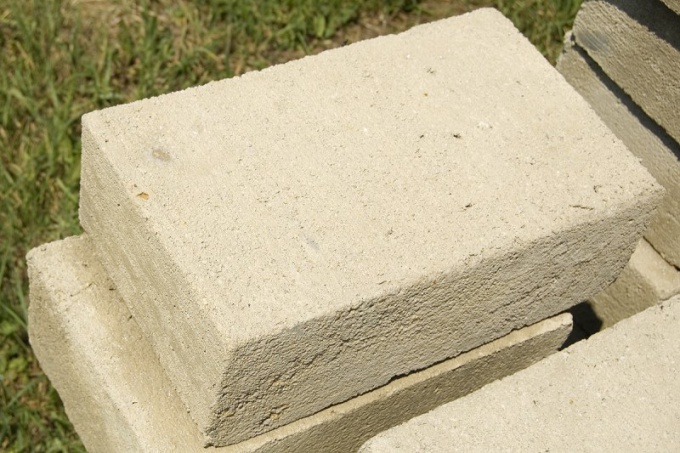The foam and gas silicate
For the production of foam is applied cement-sand mixture, water and foaming agent. The manufacture of this material requires no special equipment — just mix the ingredients and pour the mixture over the shapes. This leads to the emergence of numerous handicraft industries, which produce products of questionable quality. It is better to buy products from well known manufacturers and be interested in the presence of the quality certificates.
From the consumer point of view, the material is good enough. It is lightweight, due to the large size of the unit is simple to install. Thanks to the fine-meshed structure retains heat well. On the other hand, these pores are highly absorbent, which can lead to the gradual destruction of the material. To avoid this, the walls of the foam need to be covered with a layer of plaster.
There is another type of cellular concrete — aerated concrete. It is often confused with foam, but these materials differ in production technology. Concrete has a higher quality. It is stronger, more durable, has better adhesion, making it easier to plastering.
Another type of cellular blocks — silicate. For their production does not use cement, so material is not concrete. It is made from a mixture of sand, lime, silicates and foam. Blocks placed in an autoclave where they are exposed to high temperature and pressure. The strengths of these blocks are same as concrete — they are lightweight, warm and easy to work with. The disadvantages include low strength, poor frost resistance and a tendency to defeat the fungus. To prevent the silicate from the external environment, it revet with a brick.
Concrete
Kermitology blocks are made from cement-sand mixture of expanded clay and porous balls of baked clay. The strength of the material attached to vibropressovoe and steaming. Blocks of this type can be either solid or hollow. The material has high strength and hardness, not afraid of frost and does not absorb moisture. Able to withstand heavy loads. Part of it expanded clay serves as a heat insulator and provides good breathability. The thermal insulation property of the material is superior to blocks of aerated concrete. In addition, he is not afraid of moisture. On the strength characteristics close to brick, but is twice lower specific gravity.
On the basis of concrete created another type of construction material, the heat block. A three-layer structure consisting of a base layer, insulation and decorative finish. As insulation used polystyrene, a decorative piece made of concrete that simulates stone, and bearing capacity assumes a layer of concrete. Using these blocks, you can save time and money on works on the lining and the insulation.
Other types of blocks
Early in the construction widely used the cinder blocks. A binder in them is a sand-cement mixture, and the filler plays a role of the blast furnace slag. This material is considered obsolete and does not meet modern requirements. He badly keeps heat, afraid of moisture and harmful substances. Its only advantage is the low price.
Another outdated form of building blocks — opilkobeton, in which the cement-sand mixture connected with sawdust. It is very well absorbs the acoustic waves, making it an ideal material for sound insulation. Use it for capital construction at this time is inappropriate because of its shortcomings — he is afraid of water, retains heat poorly, and the quality of the material is unstable.
